|
Uploaded: 3/2/2007 1:08:37 PM Categories: Analytical Collage Concepts Drawing |
Bluefly Prototype
With the growth of web-based shopping and digital media, Bluefly finds itself at the cutting edge of browser based shopping. No longer will people find themselves packing malls and shopping centers, rummaging through countless piles of inventory. Digging through the mad house of marked down clothing has been made simple with the help of Bluefly’s internet database of fine clothing. The only drawback to Bluefly’s operation is the problem of fitting the clothing to individual levels of comfort – both in physique and persona. With this project, I designed Fitting Centers where potential Bluefly customers can test-fit clothing to their unique body and personality. After doing so, they can order the clothes in the Fitting Center, or back at home online. The customer will then receive their garments directly at their doorstep. If the clothes don’t work out, just return them to your local Fitting Center for a refund or exchange. During the second to last semester of college I originated the Fitting Center project as a prototype for all shopping experiences of this kind. The philosophical underpinnings of this project took over the design process, driving me into the written works of Friedrich Nietzsche, Walter Benjamin, and Martin Heidegger. Toward the end of the semester I came to several conclusions about the prototype:
The Bluefly Fitting Center would only occupy renovated buildings. The existing interior would be gutted, leaving only the exterior skin of the building open to the sky. Once inside the open air space is meant to strip away any remaining sense of local context. This would, in theory, remove a visitor’s extroverted tendencies, forcing them to become introverted. Now isolated, a pathway leads them down a narrow staircase and into a spherical chamber. The chamber is designed to strip the visitor of visual depth by placing them on a raised pedestal face-to-face with the garment they have come to try out.
Conceptually, the project is meant to be critical of how culture develops, and how people cast aside an independent sense of identity in favor of a subscription to collective norms. The Fitting Center was designed to usurp that disingenuous appropriation of identity so that people could see themselves more clearly, and then under that light they could more effectively match their outward appearance (in this case, clothing) to their true selves.
From the outset of the semester, the lead professor asked my class to design a building using an unfamiliar design process. Instead of using raw analytical information, mapping techniques, and inspirational photographs of comparable works of architecture, I read books about metaphysics and physiology, played with form through graphics, and experimented with perspective. The end design is more intellectual than practical but I believe it to be meaningful all the same.  View:
5th yr Projects View:
5th yr Projects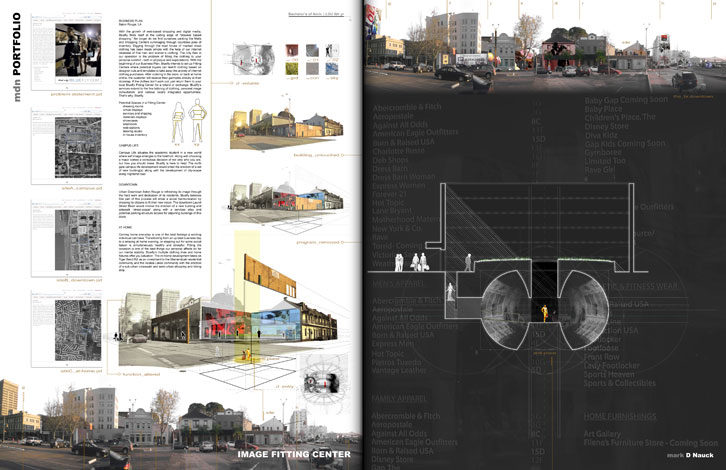
Spread from my portfolio for this project. Click the image to load a high resolution version. 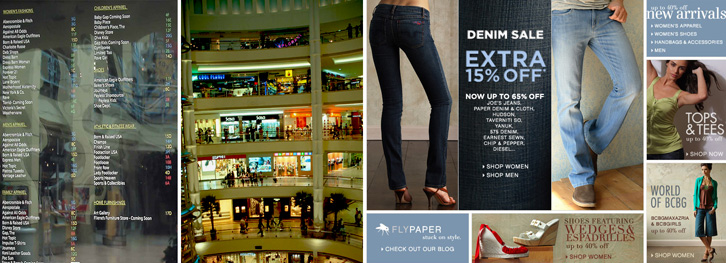
The marketing of fashion and its niche approach toward demographic specific advertising has become almost a complete self gratifying process. 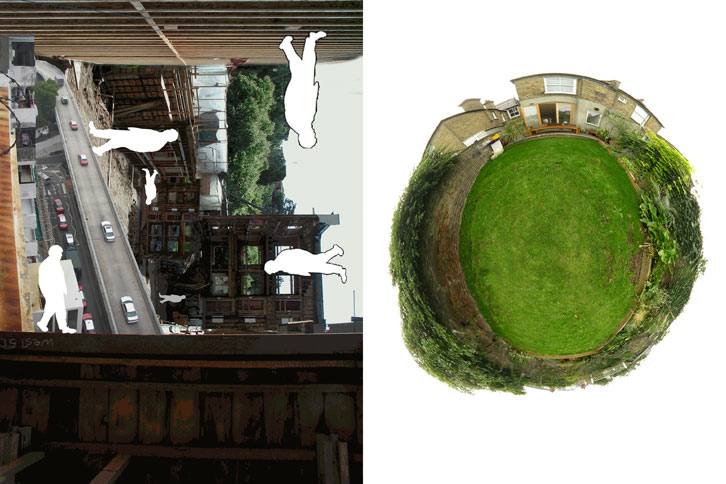
Above, some graphic studies I looked at to help make my arguments about context and the capacities of architecture to push an agenda. 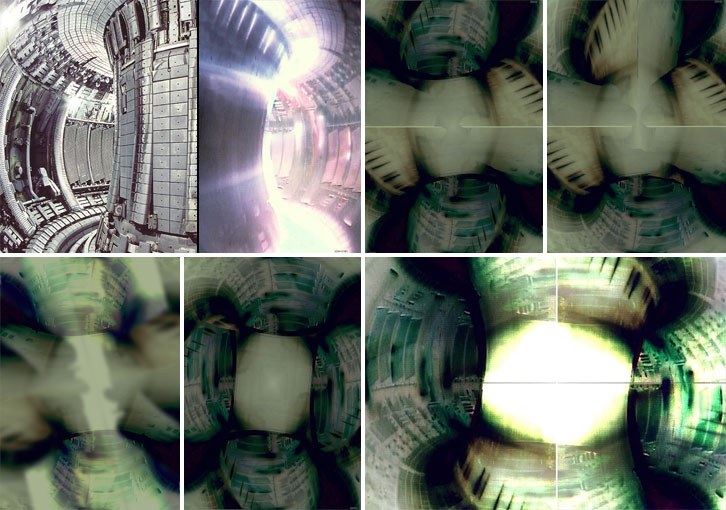
I manipulated images of a centrifuge to help visualize the main chamber space of the project. 
I used mixed media collages and sketches in conjunction with my readings to report what my workload to the course professors. 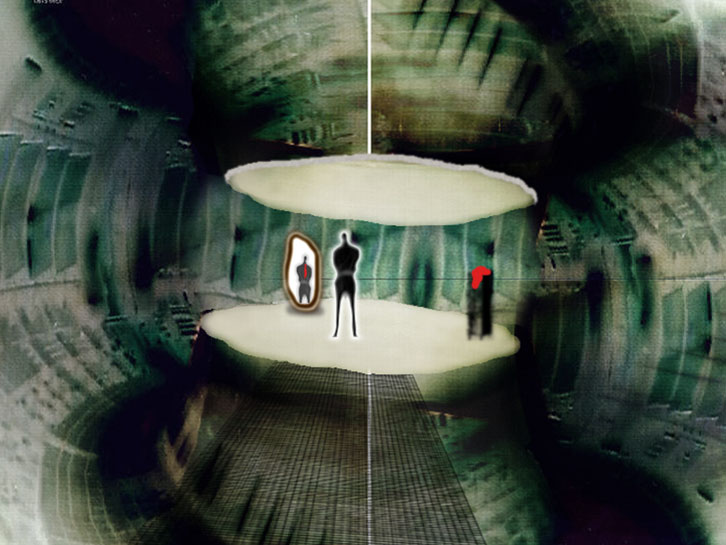
In the above picture I present a view of the main chamber space as a visitor makes there way toward the dressing platform. 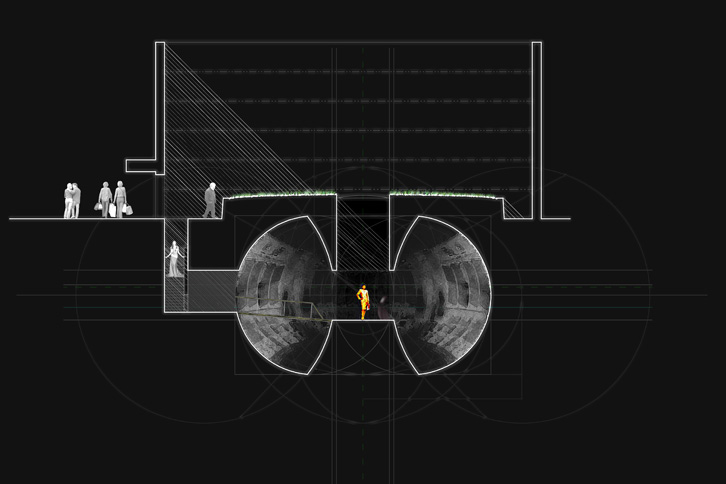
A cross section of the prototype reveals the required proportions necessary for installing a Fitting Center at a proposed location. 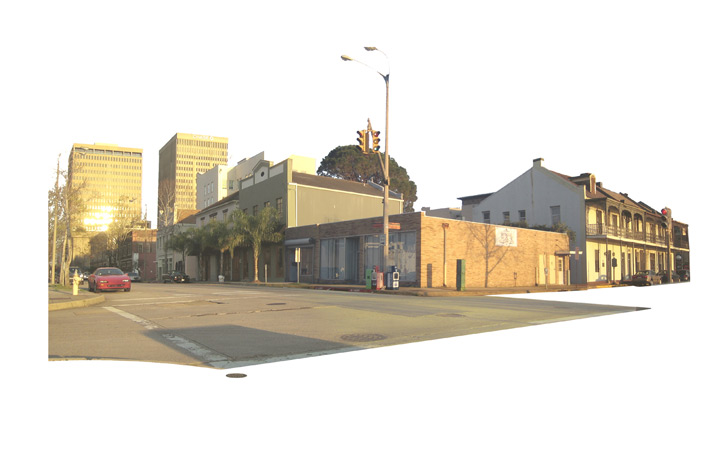
I presented this real world location as a potential site where the Fitting Center could be built in Baton Rouge. 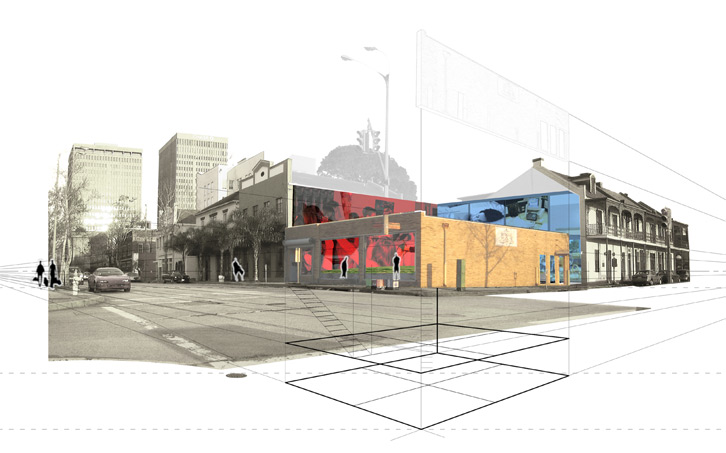
The adjacent hipster bar and mixed use building would serve as a contextual backdrop for the Fitting Center. 
In the main chamber, the visitor is alone, relying on themselves for contextual support as they make decisions about their image. |
 Previous Entry
Previous Entry Chalasani House
Chalasani House